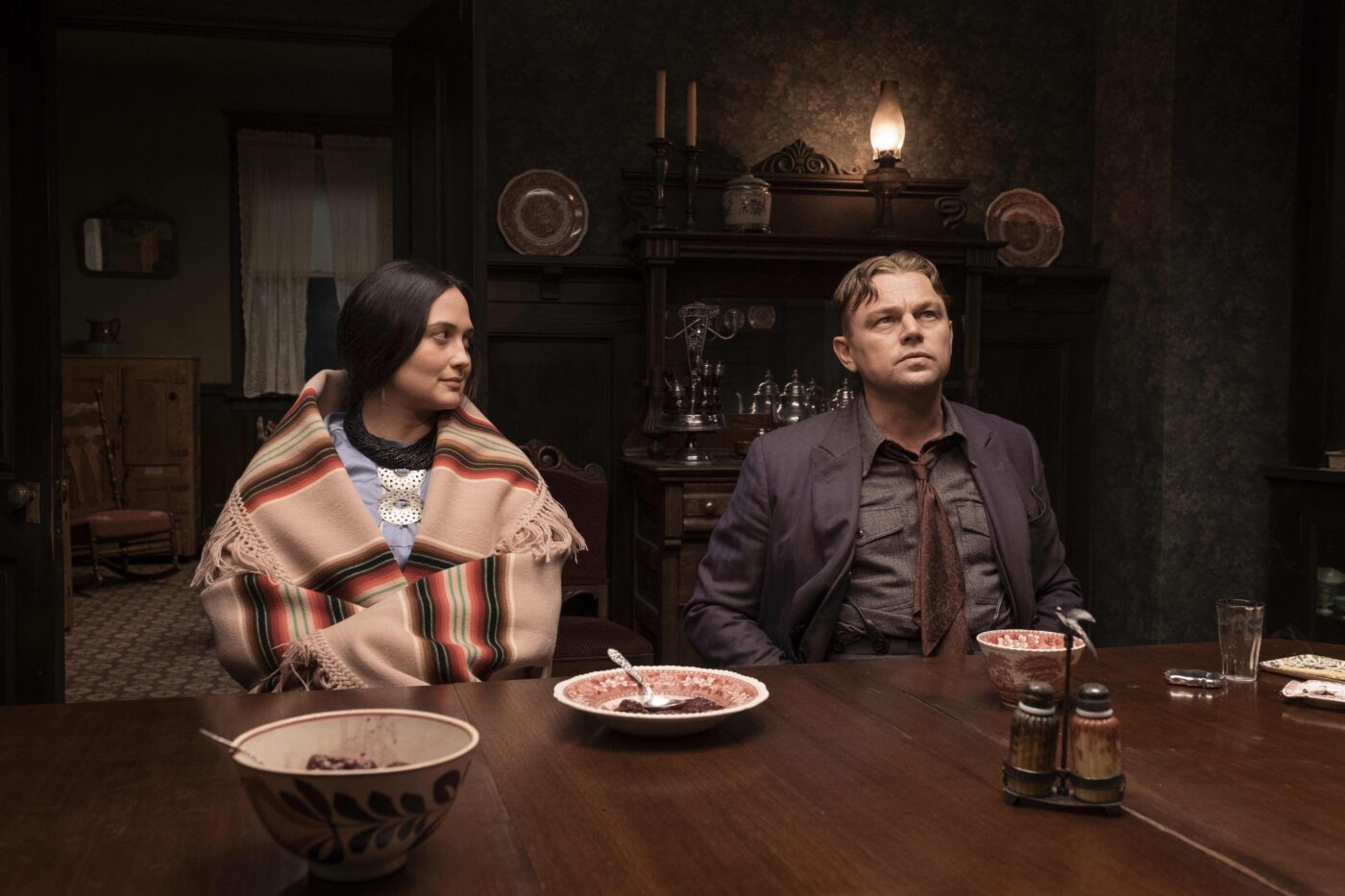Martin Scorsese’s true-crime thriller Killers of the Flower Moon opened this week to critical acclaim, with many proposing Oscar nominations for leading stars Leonardo DiCaprio, Robert De Niro and Lily Gladstone for their towering performances in the legendary filmmaker’s latest epic.
Killers of the Flower Moon tells of the true-story killings suffered by the Osage people in 1920s Oklahoma. The Osage Tribe, forced to cede their remaining ancestral land by the U.S. government from Kansas to Indian Territory situated in present-day Oklahoma, discovered crude oil beneath their feet.
Killers opens with an unchecked gushing of black gold ascending from the earth, with 19th-century Osage people dancing and celebrating below a stream of immeasurable riches. Overnight, the Osage Nation became the wealthiest people in the United States per capita; this is where Scorsese’s latest thriller begins.
Their newfound wealth was widely broadcast and the inevitable vultures began to circle, leading to opportunistic white communities converging on Osage Country looking to extort and steal their share of the riches, with fatal consequences.
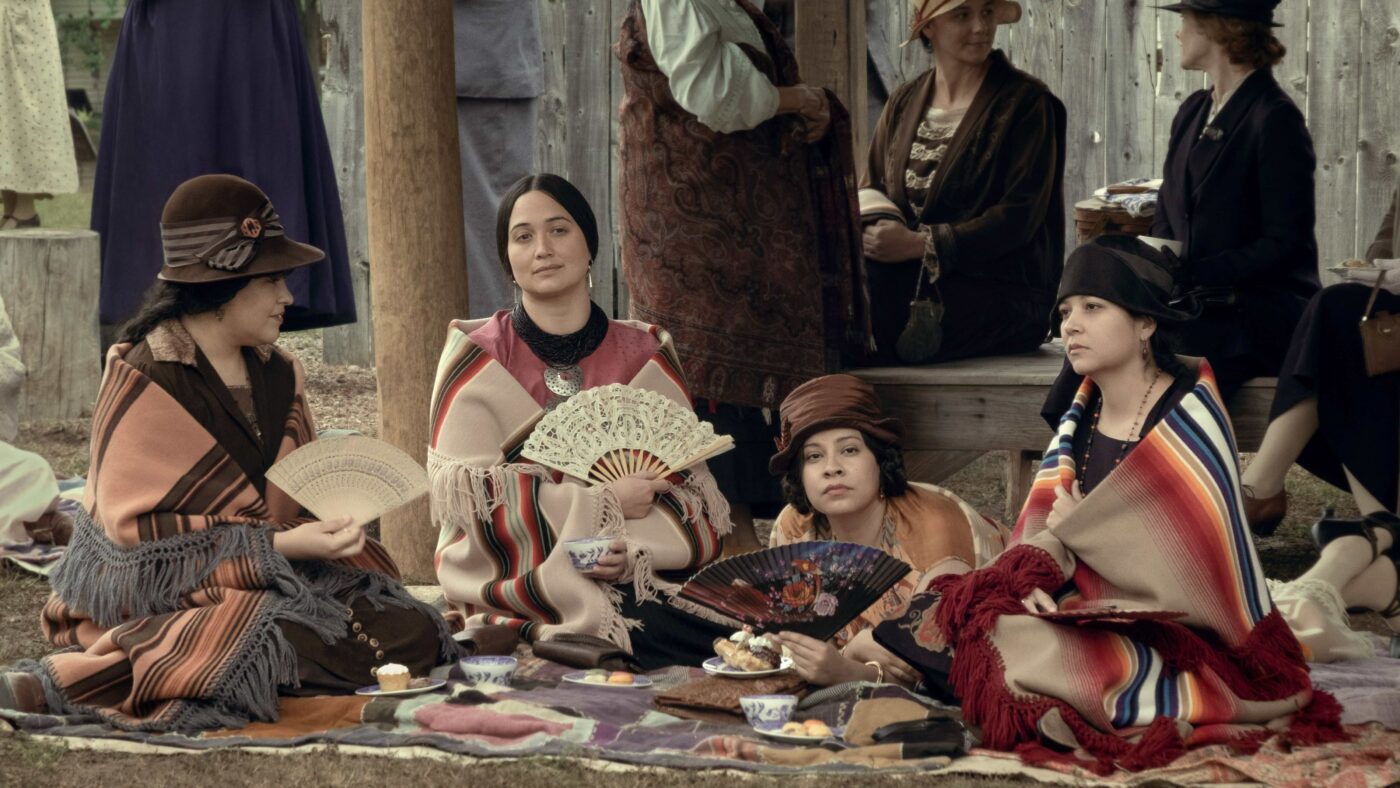
Killers represents Scorsese’s second consecutive outing presenting non-fiction material through his signature lense; the unopposed king of crime thrillers, Scorsese’s expert handling of the real-life Osage killings presents the legendary filmmaker’s masterful touch and flair, guiding the audience through an intricately woven and compelling story of deception and death.
Told from the perspective of the killers, Scorsese’s flick is a modern Western heist movie; it’s convoluted and confronting, but expertly presented with a foreboding pace as the story alters and flickers through the changing targets with each subsequent removal of a member of the Osage people by the scheming white miscreants.
Fast forward some years later after the Osage Nation’s fortuitous discovery, and Ernest Burkhart, a World War I veteran portrayed by Leonardo DiCaprio, arrives in Fairfax, Oklahoma at the door of his uncle’s home, William ‘King’ Hale.
Played by Robert De Niro, King is affable and considered when he reconnects with his estranged nephew in this first meeting, but Scorsese is quick to reveal this powerful figure’s overarching, evil intentions.
A wealthy cattle rancher and apparent friend to the powerful Osage Nation with whom he shares his borders, King is presented as this omnipotent patriarchal figure during the first scene at his home. It’s here he begins to dig into his nephew’s experience away on military service and his interest in and experience with women during this time.
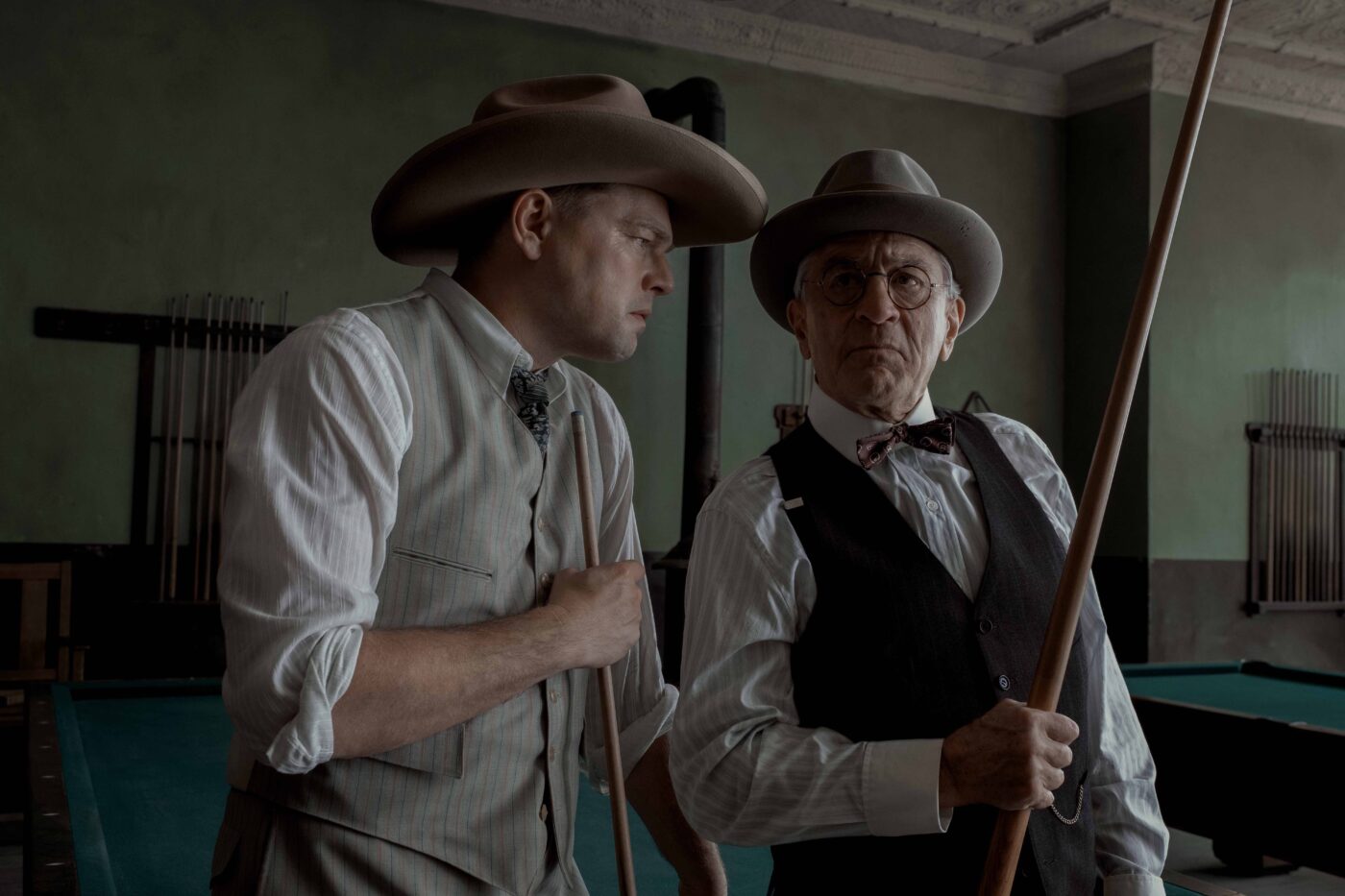
He asks his nephew if he came back with any “diseases” and if he likes “red women.” Ernest’s admission to liking women of all colours, including blue, is followed by a further confession; “I’m greedy” Ernest replied, which was met with a smile from his reticent uncle. For King, the scheme had already begun.
Power and deception are two constant themes central to Scorsese’s skilful depiction of the Osage murders in Killers and King’s exchange with his malleable nephew is the first flexing of his power; he asks him personal questions; measures his intellect and tells him to read.
What could be considered a reunion between two family members after a period of separation, is actually a job interview for something Ernest never actively signed up for. In Scorsese’s Killers, power is currency, and the King is one of the richest men in this story.
Behind the complicated facade of a permanent frown, Leonardo DiCaprio delivers a magnificent portrayal of the bumbling fool struggling to grasp the complexities and intricacies of his uncle’s plan.
He’s told to court Mollie Burkhart, an indigenous woman of the Osage tribe, and – unbeknownst to Ernest – part of the wealthiest family in Oklahoma. Ernest’s ignorance is plain; he simply knows Mollie as a returning passenger of his taxi service.
Yet he’s encouraged by his uncle to make a good investment, and Ernest falls for Mollie, plainly admitting his love of money during one of their first meetings.
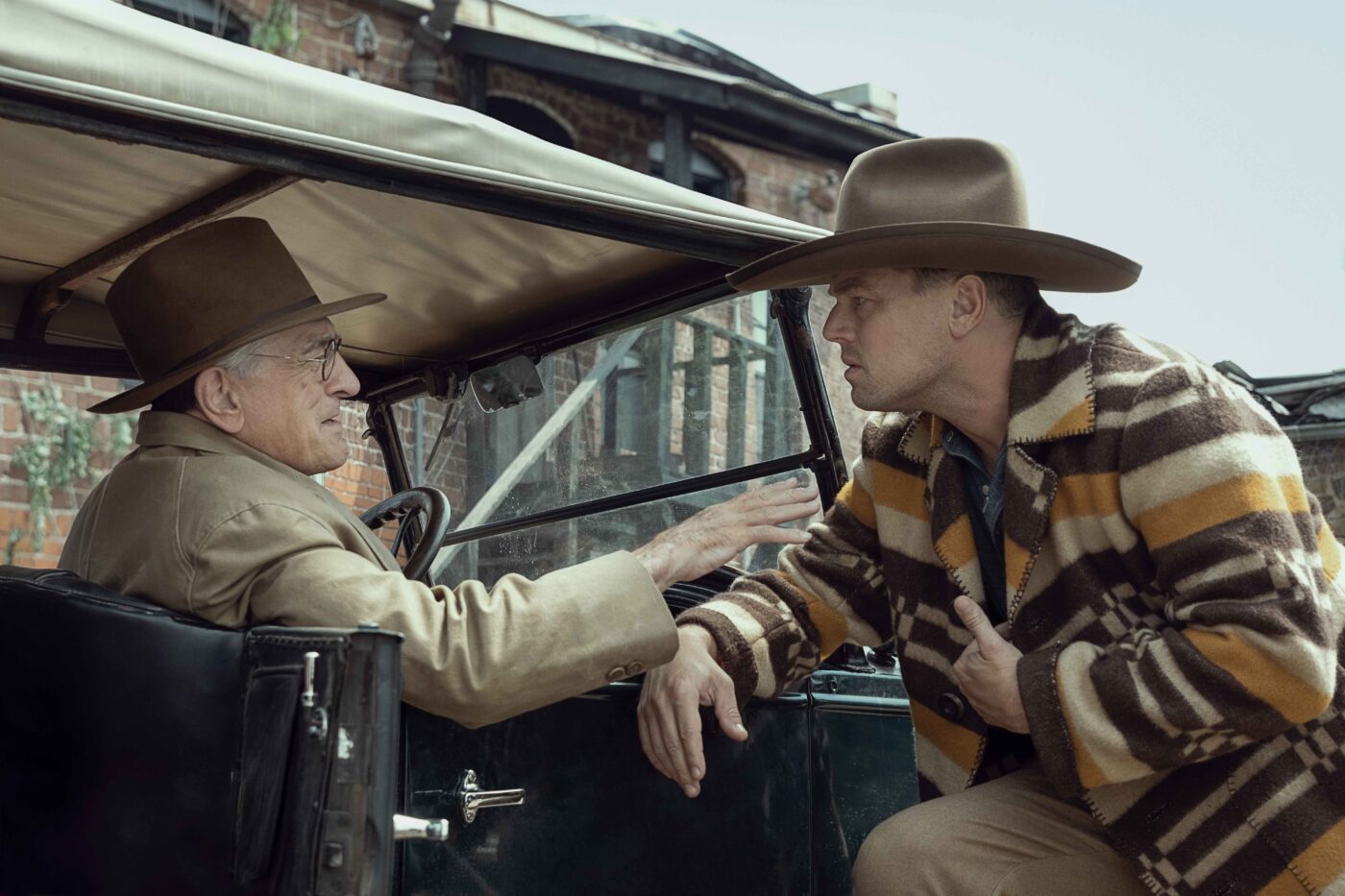
Lily Gladstone’s portrayal of Mollie Burkhart is a tour de force throughout Scorsese’s Western epic; her silent presence is palpable and expertly presents Mollie as a stoic and smart member of the Osage people.
“There’s a profundity to her and there’s a sweetness, at times, of face,” Scorsese revealed to the New Yorker. “We felt confident that she knew more than us. She just knew it, meaning she knows the people, she understands the situation, she understands the delicacy of the confusions and, I think, the trespasses, so to speak.”
There’s a scene that stayed with me for some time after I had finished the first watch-through, encompassing Gladstone’s colossal performance as Mollie walks through the train station with Ernest by her side.
The camera glides through a sea of white, male faces staring back at her, and as the camera switches, the audience sees Mollie’s eyes, suspicious yet defiant, staring back at the litany of threats she detects in each of these oncoming men.
Mollie seems all too aware of the intentions of the white guardians established by the U.S. government to control the flow of the Osage Nations’ seemingly brimming wealth. She quickly sees through Ernest’s shameless money grab – although Ernest isn’t exactly trying his best to conceal it – calling Ernest a “coyote” and saying: “Coyote wants money.”
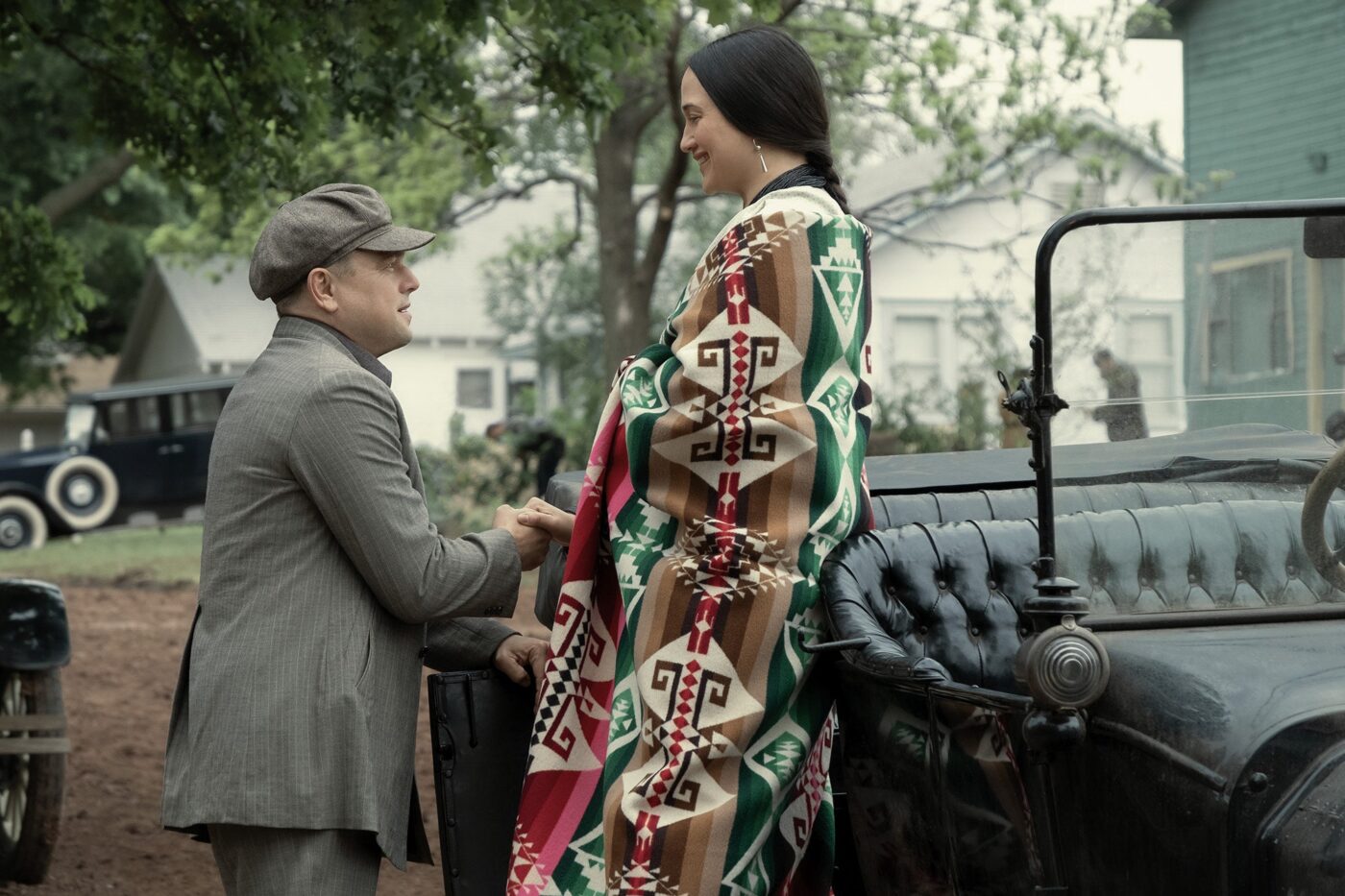
But Mollie, who’s so used to independent control of her life and affairs, almost appears to enjoy the servitude of Ernest and allows herself to fall in love with a man openly seeking financial gain. Much to Mollie’s detriment, she allows Ernest to love her back; and here, with a devastating clockwork tempo, we start to see the methodical and systemic murders occur.
Scorsese’s true-crime thriller is based on David Grann’s 2017 best-selling novel Killers of the Flower Moon: The Osage Murders and the Birth of the FBI and presents a dramatic and addictive portrayal of the systematic murders of the Osage people by the vulturous white community.
Unlike in Grann’s book, Scorsese doesn’t wait to reveal the killers; their malign intentions are plain and clear to the audience from early on as we’re presented with a host of unsolved – and dismissed – Osage deaths and their causations. The final victim was a woman, shot in the back, though her death was considered a suicide; we then see her husband commit the crime and place the gun beside her dead hand.
Yet, through Scorsese’s 206-minute-long epic, the director’s coup de maître lies in his ability to carry the story along with each brutal and bloody murder.
The audience begins to view each timely death with an expectant inevitability; through this iconic filmmaker’s seasoned lens, we all become complicit in each of the killers’ crimes, eagerly waiting with anticipation of the next murder in Fairfax, Oklahoma; passively watching on as the circle slowly begins to close in on the ailing Mollie Burkart.
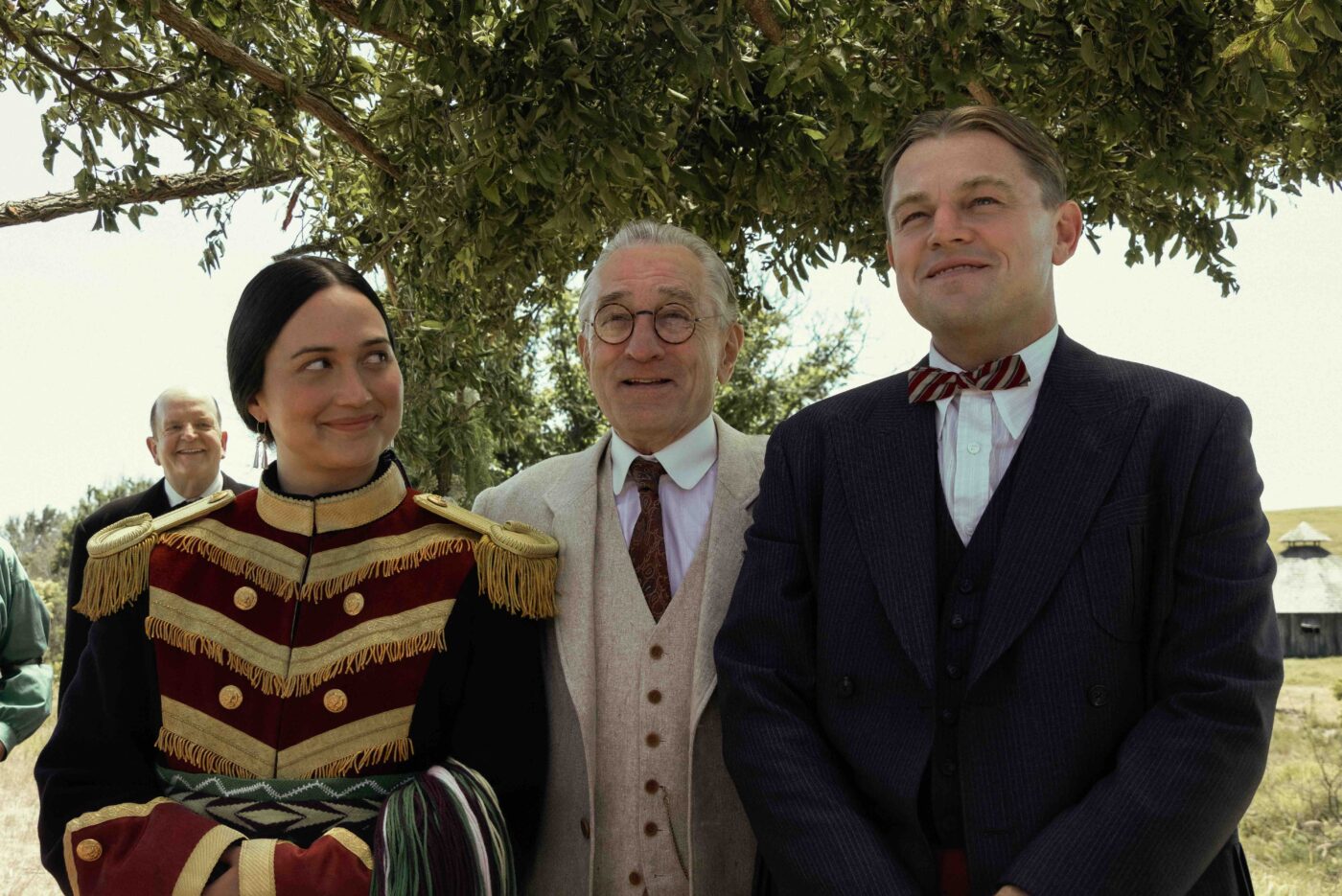
“Killers of the Flower Moon is as close as I can get to the perfect theatrical experience,” Scorsese confesses. “It reminds me of the films that were very special that I saw in the 50s and 60s, or not the same kind of film, but I’m saying the theatrical experience of seeing a film that is an epic in a way and having to be seen on a big screen with a large audience. It’s really getting the reactions from the people you can feel around you and it all becomes one experience.”
Killers of the Flower Moon is a brutal exploration of power against the beautiful backdrop of America’s West; the chilling and calculated acts that corrupt individuals and groups will employ in their relentless quest for it is a story as old as time, but through Scorsese’s careful prose, the audience is left in awe, incapable of turning away, ensnared by the unfolding destruction that befalls the characters, even when their fates appear irrevocably sealed.
